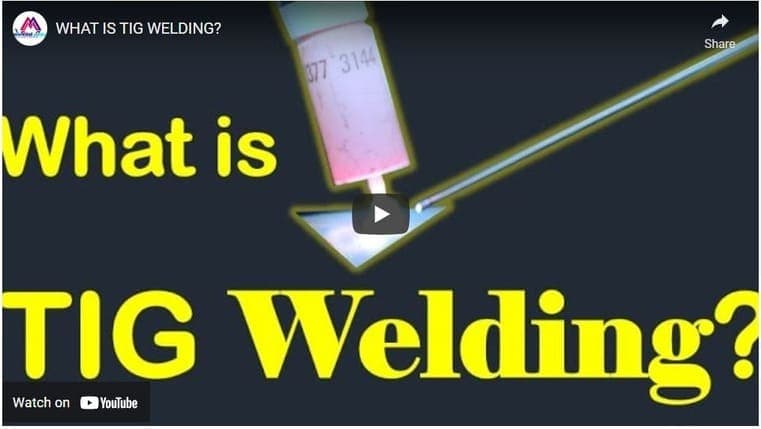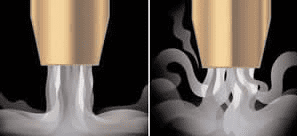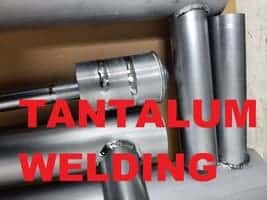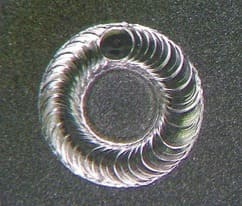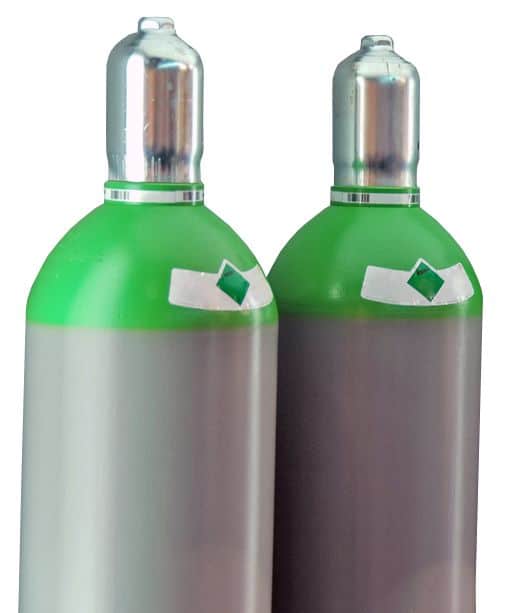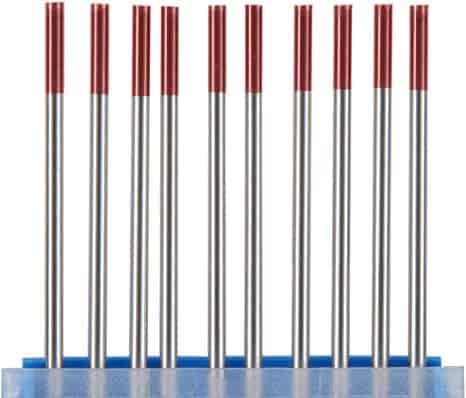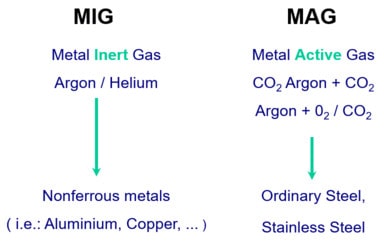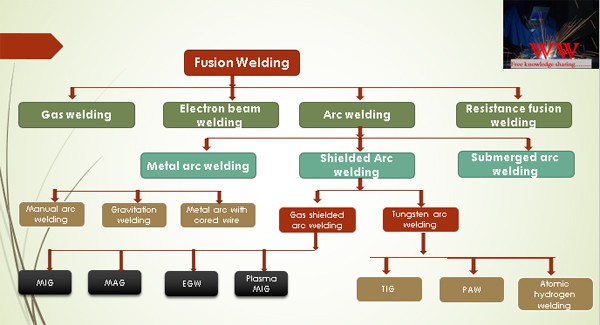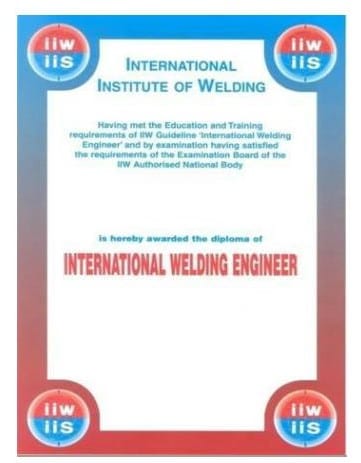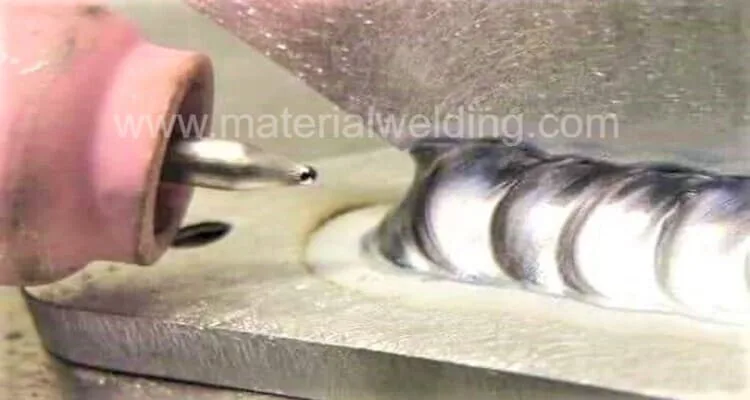What is Gas Tungsten Arc Welding (GTAW) or TIG Welding?
GTAW stands for Gas Tungsten Arc Welding and is also called Tungsten Inert Gas or TIG Welding (USA Terms). The process is carried out with a non-consumables Tungsten Electrode having a melting temperature of more than 5972°F (3300°C) with an inert shielding gas- Giving the name of the process as Tungsten Inert Gas Welding.
At this high temperature, TIG gives very good fusion and clean welds. Inert Gas (Such as Argon, Helium & Neon) are gases that do not take part in any chemical reactions. Hence, if used for welding, they will not react with any alloying element present in the weldment and keep them intact.
In German language, ‘W’ means wolfram, so the TIG called ‘WIG Welding‘ or WIG-Schweißen in German. TIG welding International standardization designation number as per ISO EN 24063 or ISO 4063 is 141.
TIG Welding (GTAW) Machine Operation
TIG Welding is a manual welding process. In this process, a non-consumable tungsten electrode is used to generate heat for fusing the base metal & filler wire. An externally supplied filler wire is added manually to the welding arc. As the name suggests, shielding gas such as Argon and Helium or a mixture of these inert gases are used for gas shielding purposes.
These gases shield protect the solidifying weld pool from atmospheric contamination to avoid weld oxidation, porosity, and other defects.
To know and learn more about TIG welding, watch our detailed classroom Training Video on YouTube.
TIG Welding Process Principle
TIG welding is one of the important welding processes in fusion welding processes. This process is very versatile and makes it suitable to weld both thin sheets and thick sections, especially root run in pipeline welding. Welding can be performed in all positions although with a low productivity rate.
The TIG process uses the heat generated by an electric arc between the base metals to be joined and a non-consumables tungsten-based electrode as shown in figure 1. The TIG welding arc & molten weld pool is covered by a shield of inert welding gas to protect the weld pool and the tungsten electrode from oxidation & contamination.
The filler rod is fed manually by the welder at a uniform feed rate/ or as required. Due to very high control of the welder on the weld pool, TIG suits best for precision welding, welding of thin sheets and repairs purposes.
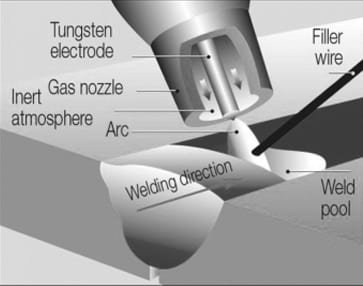
TIG Welding Equipment Setup
The welding process works on constant current characteristics (CC) or called dropping characteristics. The workpiece is connected to the positive terminal and the welding torch to the negative terminal. The on/off switch is located on the welding torch. The process is manual in operation.
The TIG torch is moved manually and the same time-filler rod is added manually with another hand to the weld puddle. The equipment needed for GTAW set up is as shown in figure 2 are:
- Power Source
- Welding Gun
- Shielding Gas
- Welding cables / leads and gas hoses
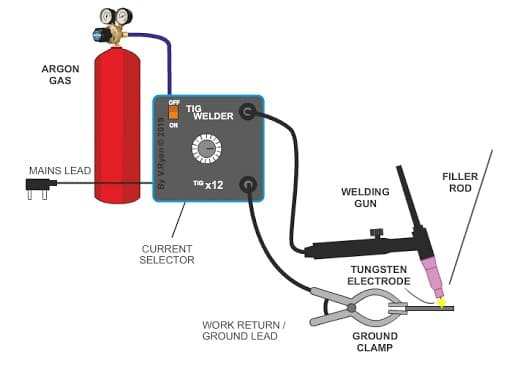
Figure 2 Equipment setup
TIG Welding (GTAW) wire types & sizes
TIG welding wires are available for different materials e.g., carbon steel, low alloy steel, aluminum, stainless steel, copper alloys, nickel-base alloys, etc. to name a few. ER70S-6 & ER70S-2 are the most widely used Carbon Steel wire for TIG Welding.
The AWS Specification & classification details for different TIG welding wires are:
- Solid wire (AWS A 5.18 for carbon steel electrodes),
- Metal cored wire (AWS A 5.36 for carbon steel electrodes and low alloy steel),
- AWS A 5.7/ SFA-5.7: Copper and copper base alloys electrode,
- AWS A 5.9/ SFA-5.9: Stainless steel electrode,
- AWS A 5.10/ SFA-5.10: Aluminum electrode.
Different size of filler wires is used ranging from 0.030”, 0.035”, 3/64”, 1/16”, 3/32”, 1,8” (0.8 mm to 3.2 millimeters) in the industries according to the requirements. A higher diameter offers more deposition although less suitable to weld thin sheet metals.
Types of Welding Torch for TIG Welding
Figure 3 shows the different types of TIG welding torches. GTAW welding torch is having two variants:
- Air cooled welding torch
- Water cooled welding torch.
An air-cooled welding torch is used for normal duty welding activities. Welding requiring a high duty cycle and high welding current normally use water-cooled torched. The air-cooled torches due to their simple construction are cheaper than water-cooled torches. They are also easy to repair compared to the latter ones.
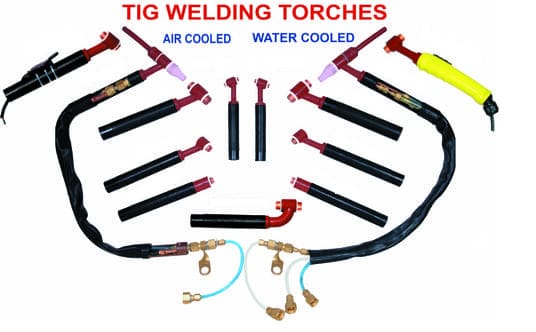
Figure 3 TIG Welding Torches
A TIG welding torch construction is shown in figure 4.
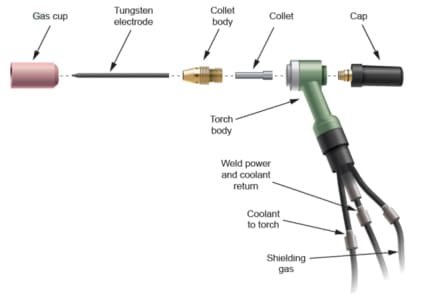
Power Source for TIG Welding
In TIG welding, DC welders are used. Mainly DCEN or also called straight polarity is used for welding carbon steel, stainless steel, low alloy steel, copper & Nickel alloys. When Welding aluminum, AC TIG welders are deployed as they give better cleaning action to remove the oxide layer sticked on the aluminum outer surface. DCEP or reverse polarity is not used in GTAW as this will put high heat on the tungsten electrode and shorten its life.
Method of arc starting in TIG
There are three methods of arc starting in TIG welding as given below:
- Scratch method
- High-frequency arc starting
- Contact method
The three methods are shown in figure 5 below.

Shielded Gases for TIG Welding
The selection of Shielding gases for TIG welding is based on the type of material to be welded. The most widely used TIG shielding gases are:
- Argon
- Argon mixed with helium
- Helium only.
Advantages of GTAW (TIG Welding)
- The process is used for welding most of the welding with high quality.
- TIG welding does not produces any welding spatters.
- TIG welding can be used with filler or without filler wire technique.
- TIG welding produces very high quality welds without any discolorations.
- The process suits best for welding open root passes in piping.
- TIG is highly suitable for welding thin sheets and exotic materials.
- TIG is the best available welding process for welding highly oxidizing materials such as Titanium, tantalum etc.
- This process can be easily automated for robotic welding and for special purpose machines (SPM).
Limitations of GTAW (TIG Welding)
- Welding deposition rate is very low in TIG welding.
- TIG welding is slow process due to manual process.
- It requires high manual skills for the welder.
- The process is not suitable for outdoor welding operations.
